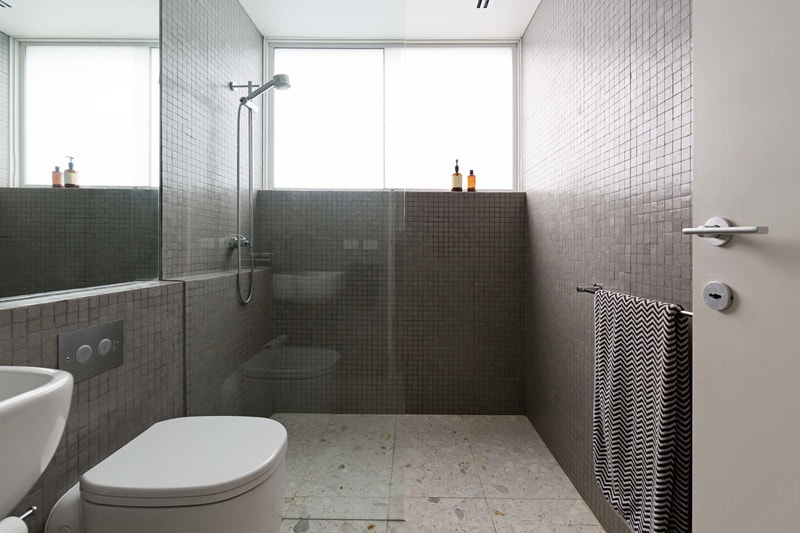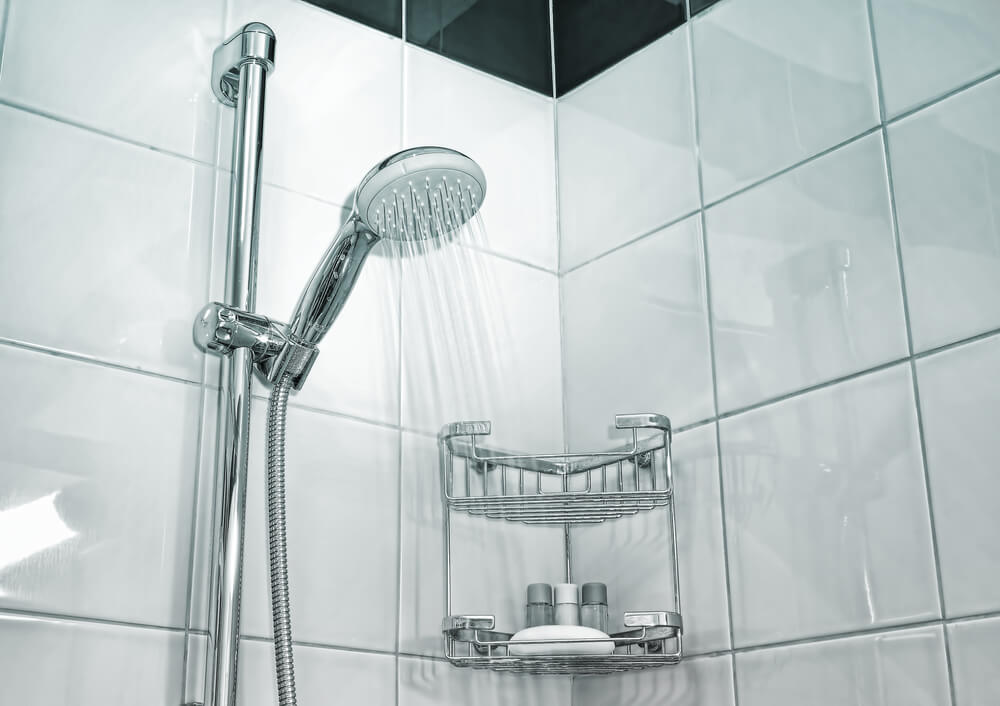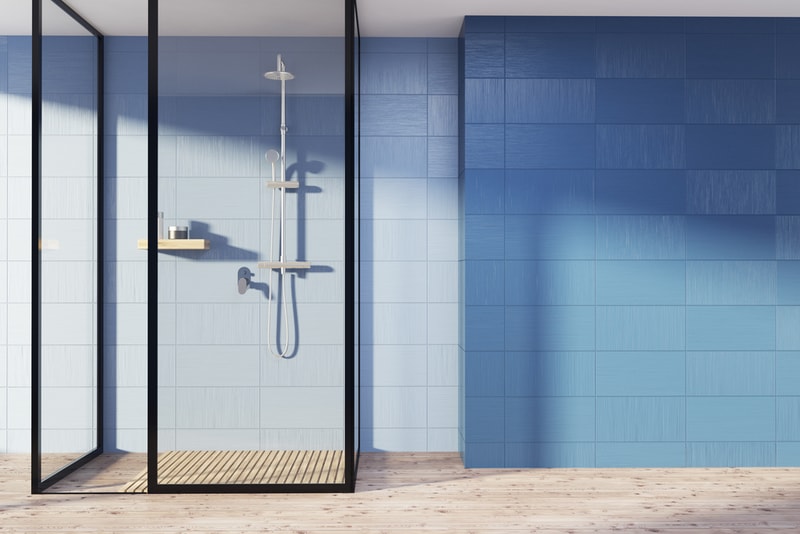Finding the right materials for your bathroom remodel is an important step, and a lot of homeowners consider ceramic shower tile for that process.
Why? Well, that is what we are going to be talking about in this article. While it’s not the cheapest option you can go with, when you want to create a shower that stands out, ceramic tile can help it do just that.
As well as being a great material for showers, ceramic floors and wall tile is also common in higher end bathrooms. When you’re feeling ready to proceed with your project, we can also help you with a range of services including connecting you with the most relevant tile installers in your area.
It’s also vastly popular to install in the bathroom because it works really well with radiant flooring heating, a lot better than other materials such as wood that besides being bad at handling the moisture in the bathroom also doesn’t work well with this type of infloor heating because it insulates too much.
Those are just some of the reasons why ceramic shower tile is so popular.
Should You Consider a Walk In Shower?

Walk in showers provide a couple of advantages. They can both provide a majestic look to any bathroom, which you will get to experience every single time you get out of bed in the morning, and they also provide safety since they’re easier to get into, just the same way that walk in bathtubs are, and they can therefore beautifully be paired with a home remodeling project intended for seniors because the risk of falling is decreased not having to climb over a large step first. If you’re remodeling your home for seniors, it’s obviously also important to think about installing grab bars and other measures that can help with safety, We recommend you read our specific article on the topic to get you started.
Besides being a safer option, the walk in shower goes really well with a desire to create a minimalistic and contemporary feeling in your home with their seamless transition to the rest of the bathroom. There’s only on thing to say – we’re fans of this type of shower installation!
What Are Some of the Material Considerations You Need to Think About?
When you’re choosing the material for a shower, you don’t just blindly go out and pick the first material you see and like. It’s a thought process that deserves serious consideration, and you need to think about the following factors in the process.
- Durability – first of all, you want the material that you choose to actually be durable and handle the amount of stress that it is exposed to, which includes the high level of humidity and water from when you’re showering.
- Slip-resistance – some materials are very slippery, and making them wet can just make them even more so. Some types of tile will also get really slippery when wet, so it’s important to make sure it isn’t the case with the tile you chose. It’s especially the case when you have kids or old people having to use the shower.
- Consider smaller tiles – the advantage of installing smaller tiles, such as mosaic tile, is that there’s a larger amount of grout relative to the overall size of the area. Grout provides great slip-resistance, and that way it will be a little bit less important that the tile itself isn’t slippery.
- Water-resistance – you don’t want the water from the shower head to actually make it underneath the material, which just becomes a place where mold grows. Mold is not only unhealthy to have in your house but remedying it can be expensive. Besides making sure that the tile itself is water-resistant, you need to make sure that the grout is in good condition since it’s often the weaker link, and grout that is in bad condition should be repaired or replaced. You can also get it sealed so that it is better protected.
- The visual options – even if the material needs to have all the above qualities, it should also be something that you actually like looking at.
- Maintenance – some materials come with more maintenance than others, and this is especially an important thing to be looking for when you’re installing it in a place that has as harsh conditions as the shower does.
If in doubt, you can always ask the ceramic installers for their opinion on the material you’re choosing to go with. Good companies should set their own interests aside and provide you with the recommendations that actually make sense for you. What that means is that it’s not their profit that comes first but rather making sure that you’re actually getting what it is you want to be getting, within the budget that you have available.
That is why we’re not just talking about ceramics in this article, but rather all your different options.
Ceramic Tile: Its Pros and Cons

Given that this article is focused on ceramic tile, we’ll start off by introducing its pros and cons.
Pros
- Good return on investment – installing tile, especially if you have a high-end home with nice appliances and finishes, is almost required, and it in fact helps increase the value of your home too if it’s installed well and the right considerations were made in the process. That means you’ll be able to recoup the vast majority of the money you’re putting into the project from the increase in the resale value of the home. That’s great news!
- Ability to create beautiful, custom designs – not only is tile available in thousands and thousands of different designs, but you can even get custom work done should you want it, and that can include everything from actually getting the tiles printed with the design you desire to have intricate cuts and patterns made.
- Different textures can help make it more slip-resistant – the ceramic tile world has come a long way since its introduction thousands of years ago, and you are now able to not just get a lot of different designs, but also different textures, which can all help in creating a feeling that makes tile that looks like wood actually feel more like the real thing too.
- Endless design options – while the manufacturers will be able to offer better prices if they produce more volume, if you don’t like the design of one tile, there are a lot of other manufacturers ready to provide you with alternatives, meaning there are literally thousands of different designs.
- Radiant floor heating – we mentioned that previously in the article, but this is a flooring material that goes really well with that type of heating system, and it’s even a very efficient way of heating your home too, which will save you money too.
- Ability to cut it to fit with the ceramic patterns you want – while cutting it isn’t easy and is best left for the professionals, it is possible to have it done. It is, however, more difficult to cut porcelain tile because it’s more dense.
- Replacing a single tile is possible and not too difficult – if a tile cracks, you’ll need to replace it to make it look like new once again and fortunately the whole process rather easily done by a pro.
- Very little maintenance needed – it’s typically sufficient that you just mop the floor.
- Stain and water-resistant – with the protective glaze being added to the porous tile, you end up with a final material that is in fact very water-resistant, a feature which we previously mentioned is extremely important for obvious reasons.
Be sure to check out our comparison between ceramic and porcelain tile also if you are in the process of deciding between the two options.
Cons
- The material isn’t cheap – ceramic tile not only comes in different designs and textures, but it also comes in different grades intended for different purposes. For instance, some types might work brilliantly for the wall but aren’t sufficiently strong to support foot traffic. The more durable and custom types of tile will also be more expensive than wall tile.
- Cracks in the material will show – if you get glazed ceramic tile and you chip the outer layer, it will show the body of the tile, and even if it didn’t crack, you still might be tempted to replace the whole tile. This isn’t a problem that you’ll be experiencing if you rather install porcelain because its color goes all the way through.
- The installation is not an easy DIY job – if you were thinking you were going to be spending your weekend figuring out this project all by yourself, you might want to reconsider because that’s not going to happen. The installation, especially for the heavier option, porcelain, is most easily done by someone that has years of experience with the trade.
- Improper installation will show – the material is not just heavy and therefore difficult to operate, but if you get it installed improperly, you’ll also be able to see it rather easily, once again a reason to go with a pro.
- Wider grout is easier to clean than more narrow one – if you are in love with the look of tile and therefore basically don’t want the grout to be visible, you’ll find out that a thicker grout line is actually beneficial when it comes to the ease of cleaning it.
- A prefab shower is cheaper – when you’re really on a budget, there are better options to go with than this, but its upscale look more than compensates for it.
- Grout is subject to mildew growth – when you get a prefab shower, there’s not the same risk of mildew developing because there isn’t grout that causes problems.
A Quick Glance at the Differences Between Ceramic and Porcelain
While most people aren’t quite sure what the actual differences are between the two materials, they do have important differences that make them more suitable for one purpose than another. Both materials are the consequence of clay that has been fired in a kiln, but the original materials will be slightly different in their composition.
The two materials are also fired at different temperatures and for different lengths. As a consequence the porcelain material becomes less porous after having been fired using higher temperatures, and that means it becomes more water-resistant also.
Because of its better water-resistance, it’s the preferred material for outdoor purposes (if water enters the pores, and it freezes, the water will expand and the tile will likely crack as a consequence). Meaning that it’s better to install materials outside that are simply not porous, especially in areas that will get severe winters with a high chance of frost.
Because the color is consistent all the way through the tile, porcelain is also better if you don’t want to have to replace chipped tile.
An Additional Touch to Make Your Shower Even More Remarkable
Another important consideration, especially if you’re spending the money to make your shower stand out by using ceramics, is by adding a glass enclosure. Rather than visually closing off the space by using a non-see through material, the glass makes the shower a natural extension of the rest of your bathroom.
It also helps keep the space well-it by not limiting the movement of light, and if you want to take it a step further, you can either install a window or a skylight too. The shower can also either be created as a screen or instead a full-enclosured area.
You should also consider whether or not you wish to have doors in the shower or not. In all your decision making you need to find out if you’re hoping to get privacy as a consequence of the installation, or whether you don’t mind, which can be advantageous if more people will be using the bathroom at the same time. If you do want privacy, choosing a solid wall is a more popular option. You may also have other limiting factors such as a lack of space, that can naturally limit what you’re capable of doing with it.
Other Materials to Consider
A very popular alternative to adding ceramic to a shower is to rather install a fiberglass one-piece unit. It can also be used together with ceramic tile. These units eliminate the problem that occurs with tile – there is no grout and therefore no seams. Being porous and constantly exposed to water creates an issue for the grout, so if you’re on a budget as well as concerned about the amount of maintenance, these are popular alternatives.
While they’re more convenient to install when the bathrooms originally being made, they can also be retrofitted.
More often than not retrofitting this will be difficult if it doesn’t fit through the door, which is often the case, meaning that the wall would either need to be taken down to be able to get it in place, or it’s installed along with new home construction before any walls are erected. You can probably imagine that projects that require ripping out a wall to get the materials in place quickly start running up a serious price tag.
They have the additional disadvantage that they won’t keep looking new. It’s not uncommon for them to become significantly more yellow over time, and scratches may also start to appear. While it might look good originally, higher-end construction is usually better off going with other materials.
Natural Stone and Marble
These are absolutely stunning materials to consider, but before going for them you should know that there are significant disadvantages in doing so. You generally associate marble with being an absolutely stunning material, and that’s also true. For some time at least.
The disadvantage with these materials is that they’ll need a good amount of maintenance to keep their original beautiful look. The porous surface will start soaking up all the things that’s being dropped on it, including staining materials, soap and water, and as a consequence it often won’t keep the beauty it once had. If you do decide to go with this material, protecting it with a sealant is an important step, although this sealant will only stay good for so long and will usually need to be reapplied every year for protection, and often even twice a year. How fun is that? If not, it’ll start changing color really fast.
You should also know that once the damage is done and it has started changing color, you’ll find yourself having a really hard time rectifying it, and it might not even be possible. Additionally, it’s an expensive material option to go with, and a low quality material will just be prone to getting damaged a lot earlier than its high quality counterpart.
Acrylic Sheet
The most common variations that these are available in include white and off-white. These often come with built-in shelves and offer great water-protection too. They do come available in more decorative options than simply white, and they can be purchased so that one single piece can cover the entirety of a shower wall. They can also be retrofitted more easily than fiberglass, because you don’t have to take out a wall to get them through.
Ceramic is more scratch-resistant, and as a consequence it also stays easy to clean even after years of usage, unlike acrylic. They’re installed with the use of caulk, rather than grout, and while you may think that’s good, it more easily attracts mildew and won’t stay beautiful for long. If water makes it behind the caulk, it can be hard to detect, and you’re quickly standing with a problem where the water is causing water damage and if this isn’t handled in a timely manner, the problem only gets more severe and more expensive to repair.
Choosing the right material for your shower should always include the knowledge of how those materials will act, and we hope that this article has given you some ideas, and perhaps prepared you for your shower project. Ceramics is definitely a very decorative option to go with, and one with so many beautiful tiles available that we’re sure that you will find some that works for you too.
